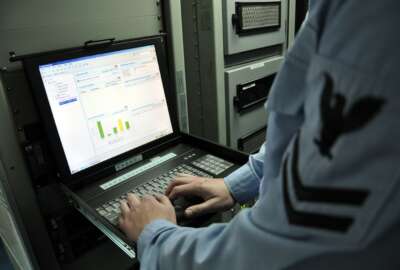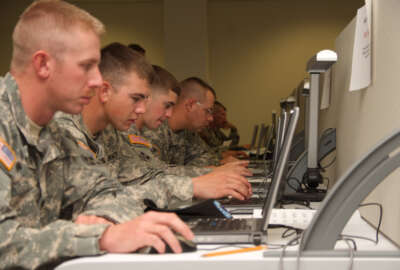
Navy lays out what it needs most from NGEN Recompete
The Navy explained what capabilities are more important for its multibillion dollar IT contract.
As the Navy is in the midst of releasing two huge IT contracts, the service wants industry to help it drill down on how it can best modernize its systems at a low price while still meeting legacy requirements.
The Navy released the first of two request for proposals for the multibillion dollar Next Generation Enterprise Network (N-GEN) Recompete program in September. The Navy expects to finalize the second proposal request in the next couple weeks. Navy Capt. Ben McNeal, program manager for Naval Enterprise Networks, said Monday that he has limited resources for modernization after patching enterprise systems for recent cybersecurity threats.
“We have to do tech refresh, which is obsolescence-based to pace the threat at any given time as to what identified with our hardware and software product line,” McNeal said at the AFCEA Navy IT Day in Arlington, Virginia. “We spend a lot of dollars doing so and that’s just to get you compliance. Then there are a number of cybersecurity unknowns. Things I did not know the previous year that I need to do this year. By the time I get done with compliance and by the time I get done with all the emerging requirements I spend a lot of dollars that would otherwise be spent on transformation.”
McNeal said the Navy is looking for industry’s help to keep the plates spinning on compliance while also modernizing and transforming IT systems without going over budget.
“One of the biggest things we are looking for is a way to trap the mouse with respect to how we can spend the dollars and get the dollars to go the furthest with respect to the limited dollars we have to spend and balancing between obsolescence and trying to transform in our current architecture,” McNeal said.
He said that is paramount to the second, larger RFP because it focuses more on behind the scenes services, cyber defense and architecture management.
The first RFP, which could be worth more than $3.5 billion, will refresh 400,000 end-user devices across 600,000 users.
Help from industry on modernization isn’t the only area the Navy is prioritizing when it comes to N-GEN.
McNeal said the Navy did not give enough credence to the money it spent on IT during the first N-GEN contract.
“I would say we underinvested in the networks for some period of time,” McNeal said. “We are still living with the original architecture that has only been updated in particular areas, like we’ve done storage upgrades, we’ve done a number of security upgrades. But fundamentally the same network architecture that was put forth to provide for enterprise services to 700,000 users is in place now, with the exception that’s it’s state-of-the-shelf infrastructure to support a 2025 2000 architecture.”
The mandate to move to Windows 10 put a wrench in the Navy networks and made the service realize why it needed to prioritize modernization because it exposed all of the underfunding from years before.
“The sins of the past were resurrected,” McNeal said. “We could see every penny we didn’t spend on moving forward and user performance suffered. We really saw those tradeoffs we made and we really found out we couldn’t wait until the N-GEN recompete to fix some of the fundamental pieces of the network.”
The service is also giving a lot of attention to unified capabilities.
“We are looking for a holistic approach to understanding how we can serve all the Navy’s, not only telephony needs, but converge voice, video and IP,” McNeal said. “I would say maybe even [adding] all the alarms, bells and whistles that are out there, which is a huge problem for the Navy in terms of the legacy IP endpoints that we have and how to we advance to a converged IP infrastructure.”
Read more of the DoD Personnel Notebook.
Copyright © 2025 Federal News Network. All rights reserved. This website is not intended for users located within the European Economic Area.
Scott Maucione is a defense reporter for Federal News Network and reports on human capital, workforce and the Defense Department at-large.
Follow @smaucioneWFED





